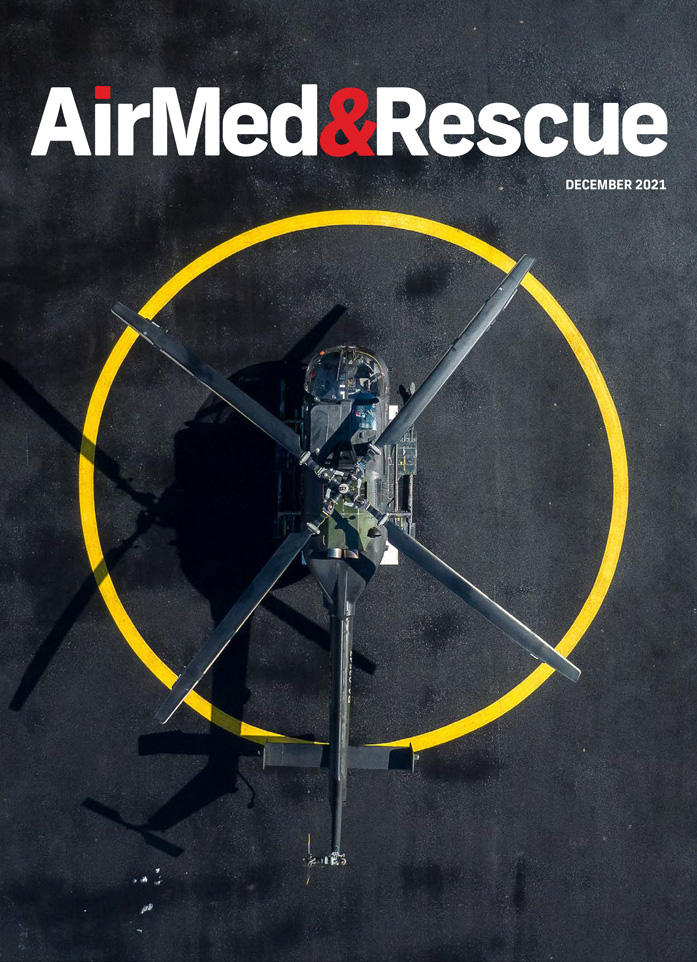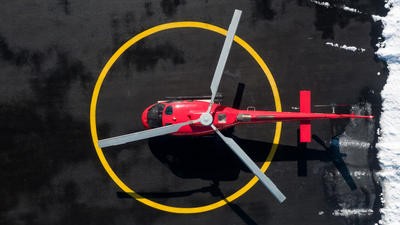What can you do when the pilot is incapacitated?

IPWG’s Sid Bingley, Adam Berger, and Susan Rivers discuss their efforts to mitigate the impact of pilot incapacitation
You are on a routine medevac mission and ask your pilot what your destination ETA is. There is no answer. Likely no big deal, they have been busy with ATC, and you and your partner’s conversation is white noise for them. A glance at the comms console shows that the ISO light is not on. Your pins are up and there is no traffic on the ATC frequencies.
You notice you are in a slight right banking turn and tap the pilot’s shoulder. They do not respond. You can see their head is slumped forward, right hand on the collect, and the aircraft continues to bank. Are you and your partner prepared for what is to come?
Evaluating how to deal with an incapacitated pilot
In 2018, pilots and medical crew from Carilion Clinic Life-Guard (CCLG), US, attended lectures held by Air Evac Lifeteam regarding its team’s experiences when one pilots became medically incapable of maintaining control of their Bell 206 Jet Ranger. Moved by their presentation, the CCLG crew and pilots from MedTrans were motivated to develop a set of procedures with a training program addressing this unique type of emergency.
A working group, the Incapacitated Pilot Work Group (IPWG) was established to evaluate what we, the medical crew, could do in the event that our pilot was rendered unable to fly or land, within our specific airframe, the Eurocopter EC135 P2+.
Firstly, we set about on how best to address it, both from a preventative approach, as well as one in the moment of the established emergency. IPWG, comprising several pilots, nurses, and medics to include a multi-skill perspective, considered what might create such an emergency during flight. Scenarios included medical issues such as strokes, cardiac problems, or trauma injuries from a bird strike identified as factors that might leave the pilot unable to perform their role or result in Controlled Flight into Terrain. We also recognized the need for a simple procedural approach that would mitigate poor outcomes, and a clear throughout line to ongoing staff training.
Formulating an Incapacitated Pilot Procedure
We decided upon what we termed a ‘Crawl, Walk, Run’ approach. In the initial Crawl phase, discussions focused on a wider, strategic understanding of the capabilities of our aircraft and the full scope of the incapacitated pilot situation. Who would need to be involved to make an Incapacitated Pilot Procedure program work, and could we generate interest within our own company?
This would require ongoing support from CCLG program management, MedTrans management including involvement from safety officers, the chief pilot, and legal department among others, the FAA, flight followers within our dispatch center, as well as our own peers. Management approval proved to be easy and continued to grow with further formal meetings. Support further materialized our team members were able to discuss the concept with an FAA representative at our next attended conference, AMTC.

Outlining the basic steps required to gain control of the aircraft
In the Walk phase, we evaluated how the flight crew already assisted the pilot with tasks such as emergency procedures, and how this could be extended to mitigate the impact of pilot incapacitation. Our pilots were tasked with brainstorming what our EC135s was capable of and to assist the crew in managing this situation. Eventually, the group felt confident that with a simple procedural check list, a single crew member could safely gain control of the aircraft.
A quick reference card was created to outline the basic steps necessary to gain control of the aircraft, ensure a proper altitude to avoid terrain and obstacles, set the emergency transponder and declare an emergency. Crew efforts would only then be focused on assessing and treating the affected pilot, who once stabilized, might assist safely landing the aircraft.
Once the procedures were developed and approved by MedTrans and the FAA, we put them into practice, and we were pleasantly surprised that MedTrans sought and achieved FAA approval not only for our program’s airframes, but for every airframe in their fleet.
Incapacitated pilot quick reference card
The quick reference card includes annotated images to direct the crew member to correctly follow the steps to stabilize the helicopter and avoid terrain specifically in the EC135. The text on the card is as follows:
If autopilot ALT and HDG are not engaged
- Altitude Hold – Push to Engage
- Heading Hold – Push to Engage
- Collective – Set to 8 FLI - if not at a safe altitude for terrain avoidance:
- Altitude Acquire – Dial to 6500ft then Push to Engage
Note: aircraft fuel in gallons will equal flight time available in minutes - Set transponder to 7700 (emergency)
- Call Carilion Flight Ops to advise them of the situation. Ask them to coordinate assistance from another LifeGuard pilot
- Call MedTrans OCC via SatPhone. They will provide further assistance for safe recovery of the aircraft
- Call ATC on Comm 2 and announce:
- MAY-DAY, MAY-DAY, MAY-DAY
- Aircraft callsign
- Location
- Flight time available (fuel in minutes)
- Intentions - Assess/treat the pilot I an attempt to have him assist with aircraft recovery

Quick reference cards were issued to all flight crew, with a larger, more detailed card placed onboard the aircraft highlighting the actual controls. The procedures were added to MedTrans aircraft orientation and safety competency checklist and are frequently reviewed to mitigate any stress that would inevitably arise if a crewmember were to ever find themselves in this situation.
Engraining the procedures, particularly the initial steps, into muscle and cognitive memory has been deemed the best way to ensure safe stabilization of the aircraft, and during flight, our pilots frequently ask us what steps we would take if the pilot became incapacitated at that time. Medical crew is not actually allowed to touch the aircraft controls pilots, but crew work their way through scenarios verbally and instruct the pilot to perform the procedures in order to commit them into memory. As the process has further developed, we have seen an increase in staff engagement and continued insight with our ongoing training, both during patient missions, as well as when there is no patient onboard the aircraft.

Sharing knowledge and planning for survival in an air emergency
Issues that have been identified include access to the copilot seat when both members of the medical crew are in the back. Smaller crew members may be able to slide around the copilot seat between the door and seat, while others may have to attempt to open the copilot door to squeeze around. We also identified that the crew member in the aft-facing seat will likely need to turn and secure the pilot back in their seat to avoid contact with the controls.
While we realize that we cannot anticipate or train for every type of emergency, this generalized process provides us a foundation to build on. We cannot count on resuscitating the pilot or that the aircraft will be maintaining level flight during the emergency, nor will we be able to know what that environment might look like after a bird or drone strike. However, our team all agree that it is better to have a plan and a chance for survival than inaction.
Following this effort, the IPWG feel crews have a very good chance of stabilizing the aircraft to buy the medical crew time to fully evaluate the situation and ultimately get assistance in getting the aircraft back on the ground. The initial aircraft stabilization affords time to avoid terrain and obstacles, declare the emergency, assess fuel, and locate the nearest airfield with crash, fire and rescue onsite. It is our hope that as we enter the Run phase, we will be able combine the above procedures with aircraft autopilot capabilities and direct communication with another pilot to save lives. Our ultimate goal would be to put our theories to the test in the simulator environment and provide actual hands on training to our crews. The choice to do nothing is no longer acceptable.
Because we all believe that safety should never be proprietary, it is our mission to share our lessons learned with as many air medical programs as possible. After presenting virtually at the Air Medical Transport Conference (AMTC) in 2019, our team has officially taken our presentation on the road, first at the Every Coast Helicopter Operations (ECHO) conference in September 2021 and then at AMTC in October, and finally the Virginia Office of EMS annual symposium in November. We hope that these presentations will provide an opportunity for an open dialogue about a problem that at one time felt impossible to solve and provide others the resources and tools they need establish their own incapacitated pilot procedures at their program.
Carilion Clinic Life-Guard would like to recognize the following team members as the core Incapacitated Pilot Work Group:
Pilot Wade Dunford, Pilot Ty LeRoy, Flight Nurse Sid Bingley, Flight Paramedic Scott Davis, and Flight Paramedic Robert Youther. Special thanks also to MedTrans Director of Operations Mike LaMee and Regional Safety Officer Keith Treadway for their support and guidance along the way.

December 2021
Issue
- Avionics upgrades making flight safer
- The equipment protecting crews from infectious diseases
- The move from single to twin-engine helicopters
- What to do if a pilot is incapacitated
- Interview: Kim Germishuys, Dutch Caribbean Coast Guard
- Profile: AMREF Flying Doctors
Editorial Team
The AirMed&Rescue Editorial Team works on the website to ensure timely and relevant news is online every day. With extensive experience and in-depth knowledge of the air medical and air rescue industries, the team is ready to respond to breaking industry news and investigate topics of interest to our readers.



